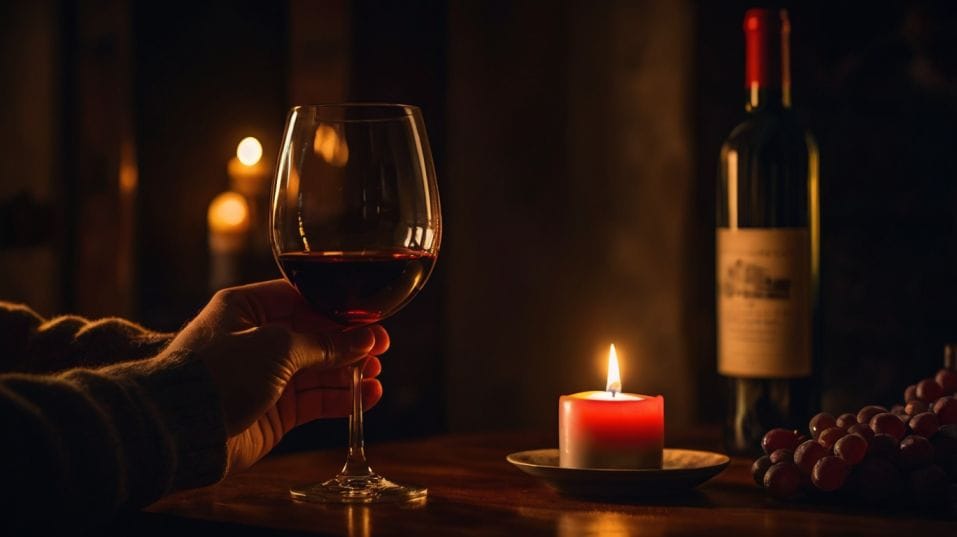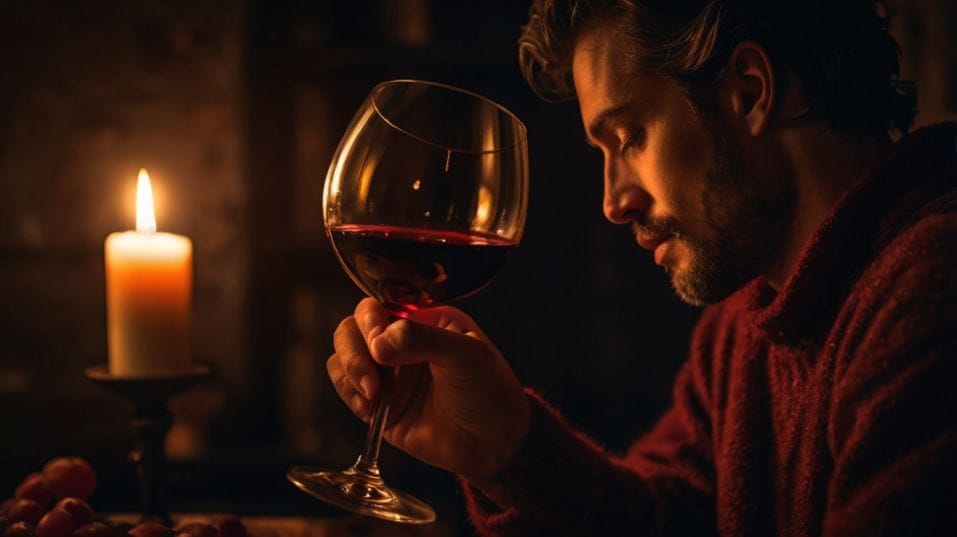Why You Should Taste, Then Read the Label
Want to build wine confidence fast? Learn why tasting before reading the label sharpens your palate and puts flavor—not hype—first.

Ever wonder if wine really tastes the way the label says it should? Before you read a single word, pour a glass and take a sip. Let your senses guide you—without hints, hype, or buzzwords.
This small shift can transform how you taste, learn, and connect with wine. You’ll train your palate, sharpen your instincts, and start building confidence with every bottle. Forget the label, for now. The real story starts in the glass.
Labels Tell You What to Expect. Your Palate Tells You What’s Real.
Every wine label is a story—some factual, some persuasive, some just marketing polish. The front usually names the grape and region.
The back might walk you through “tasting notes” or aging methods, with phrases like “velvety tannins” or “hints of wild berries.”
Helpful, sure—but also quietly influential. Read those words before you taste, and it’s hard not to go looking for them. Your brain will fill in the blanks, even if your palate hasn’t caught up.
This is where new wine drinkers often get tripped up. You think you taste oak because the bottle said “barrel-aged.” You nod at “minerality” because the back label mentioned slate soils.
But how would you know what you actually tasted? You wouldn’t—because the experience came pre-framed.
Reversing the process fixes that. When you taste before reading, you're free to be surprised. You let the wine speak in its own voice.
You pick up on things without being told what they are. That raw, unfiltered contact with flavor is how you start developing real sensitivity—not just memorization.

Build a Relationship With Your Palate
The more you taste blindly, the faster you develop something essential in wine: self-awareness. You stop asking, “Is this a good wine?” and start asking, “Do I like this? Why?” That question unlocks everything.
Maybe you're drawn to freshness and acidity, or maybe you crave texture and warmth. Maybe certain grapes surprise you with their range, or a region you’ve never heard of becomes a personal favorite.
These discoveries are only possible when you're tuned in to your own experience, not someone else's descriptor list.
Over time, patterns emerge. You start noticing that wines you like often come from higher altitudes or cooler climates.
Or that you enjoy oak when it adds structure, but not when it overwhelms. This kind of intuition is the backbone of smart wine choices—and it’s built by tasting first, analyzing second.
Learn What the Label Really Tells You
Once you’ve tasted, the label becomes far more useful. Now you’re not just reading facts—you’re connecting those facts to flavor. You’re learning in context.
You see that the lush texture you loved came from higher alcohol. Or that the bright zip of a white wine was shaped by stainless steel, not oak.
The next time you see that combination on a shelf, you’re more likely to recognize it—and choose it with intention.
Connect the Dots From Glass to Grape
The more wines you taste this way, the more fluent you become. Grape names mean more because you’ve tasted what they can do.
Regions feel less abstract because you’ve felt their impact in the glass. Even vintage starts to make sense—not because you memorized a chart, but because you noticed that last year’s bottle had more ripeness, more sun, more fruit.
Reading labels after you taste also teaches you restraint. It keeps you from making assumptions based on price, prestige, or packaging.
It’s easy to fall for a sleek label or a buzzword like “biodynamic,” but what matters is whether the wine delivers. Does it feel alive? Is it balanced? Does it hold your attention? These are questions the label can’t answer. Only your palate can.
Strip Away Noise, Build Confidence
Wine is full of noise: ratings, reviews, flavor wheels, food pairings, buzzwords. All of that can be helpful—eventually. But early on, too much information can fog your perception. It’s like trying to learn how to swim by memorizing water chemistry.
You don’t need to know everything to enjoy wine. But you do need to slow down and notice.
One of the fastest ways to build confidence is to stop relying on what others say and trust what you feel. The best way to do that is to taste without preconceptions.
Taste Like a Pro—Without the Pressure
This is why many sommeliers and wine educators blind taste—because it forces them to pay attention without shortcuts.
You don’t need to blind taste formally to get the benefit. Just pour the wine without peeking. Smell it, sip it, pay attention.
What stands out? What changes over time? Then check the label. Each time you do this, your instincts sharpen. That’s real progress.
Final Thoughts: Let the Wine Speak First
Wine doesn’t need to be decoded before it can be enjoyed. It just needs your attention.
When you taste first and read second, you start learning from the glass itself—not just from books or experts. You notice more. You remember more. And you buy better, because you understand what you’re looking for and why it matters to you.
So next time you're exploring a new bottle, skip the label—at least for a moment. Pour the wine. Taste it slowly.
Let your senses lead. Then flip the bottle around and see how the details connect. That one simple habit will elevate your wine journey, glass by glass.
Try it tonight. One bottle. No peeking. Let the wine show you what it’s made of—before anyone else gets a word in.




